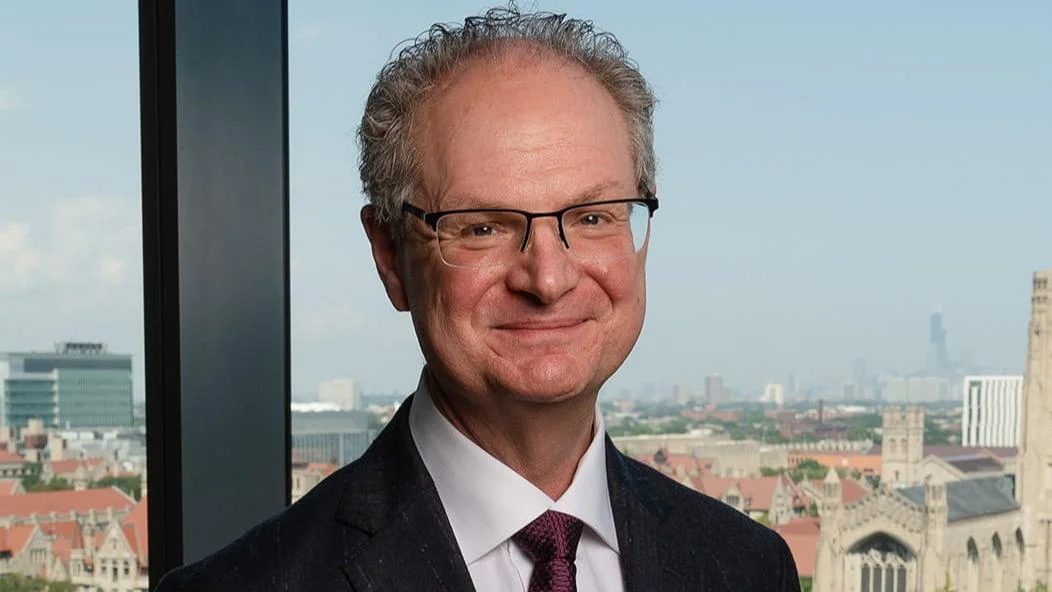The nature of life remains a central question in science, shaped by physical laws, chemical interactions, and environmental conditions. Arvind Murugan, an associate professor at the University of Chicago’s Department of Physics, the James Franck Institute, and the College, explores how principles from biology and physics can inform each other to better understand living systems.
“My group studies how physical systems can learn and process information by exploiting their innate abilities rather than through top-down engineered solutions,” said Murugan. He joined the University of Chicago in 2015.
Murugan was recently named one of eight 2025 Schmidt Polymaths. This global cohort consists of creative scientists and engineers who will receive up to $2.5 million over five years to pursue research across new disciplines or with new methodologies. The award is provided by Schmidt Sciences, a nonprofit founded in 2024 by Eric and Wendy Schmidt that aims to accelerate scientific breakthroughs.
Murugan plans to use his award “to explore how molecules can learn and compute by doing what comes naturally, revealing how evolution and synthetic biology can harness hidden powers in the physics of matter without micromanaging every detail.”
His research challenges traditional approaches where cells are treated as tiny computers with separate sensing, decision-making, and action functions. Instead, he asks: “What if the muscle can also do the learning and the thinking? What if the same physical and chemical processes that produce a response can also sense what’s happening and choose the right response?” He refers to this approach as “neuroscience without neurons.”
By studying systems that combine sensing and response within single components—rather than separating these functions—Murugan’s team has shown such designs may require fewer engineered parts while being more reliable collectively. One project investigates neural network–like computation through phase transitions in matter; here, phase boundaries function similarly to computational switches.
“These physical systems can even learn to make new kinds of decisions by just experiencing examples of desired behaviors,” Murugan explained. “All of this might remind you of artificial intelligence—or neural networks—on a computer except here all the learning and computation happen in the physical world through what molecules naturally do.”
Another focus for Murugan’s lab is error correction using properties inherent in matter. Their work suggests that error correction does not always slow down processes; sometimes it improves both speed and accuracy simultaneously. For example, DNA polymerase corrects errors during DNA replication without sacrificing efficiency.
“Error correction doesn’t always come at a cost,” said Murugan. “You can sometimes have a free lunch of both speed and accuracy.”
Rather than forming large interdisciplinary teams with specialized roles, Murugan encourages his group members to develop expertise across multiple fields so each person handles experiment design, theory development, and modeling themselves. “Our goal is for each person to carry the whole problem—experiment theory and modeling—in their head,” he said. “It’s not the most scalable approach but it surfaces ideas that siloed workflows tend to miss.” He describes this method as an "artisanal" approach.
He credits UChicago’s collaborative environment for enabling his distinctive style: “UChicago’s culture is entirely responsible for my developing the style and signature now recognized by Schmidt Sciences.” The university’s Center for Living Systems—a National Science Foundation Physics Frontier Center led by Prof. Margaret Gardel—brings together faculty from ten departments plus outside collaborators.
Murugan notes that mentorship at UChicago helped him resist trends when selecting research problems: “Junior faculty get no shortage of advice on how to pick problems based on what’s becoming popular or is currently seen as impactful. I’m deeply grateful that during my junior years at Chicago mentors here and elsewhere strongly discouraged that mindset.” He acknowledged several colleagues including Gardel, Sidney Nagel, Jack Szostak (UChicago), Erik Winfree (Caltech), Terry Hwa (UC San Diego), along with former postdocs Kabir Husain; current postdocs Riccardo Ravasio & Martin Falk; former graduate students Vedant Sachdeva & Menachem Stern; as well as his current team members for their contributions.
“I’m also very excited about the current cohort,” said Murugan. “They are pushing in even bolder and newer directions.”
This article was originally published on the Physical Sciences Division website.

